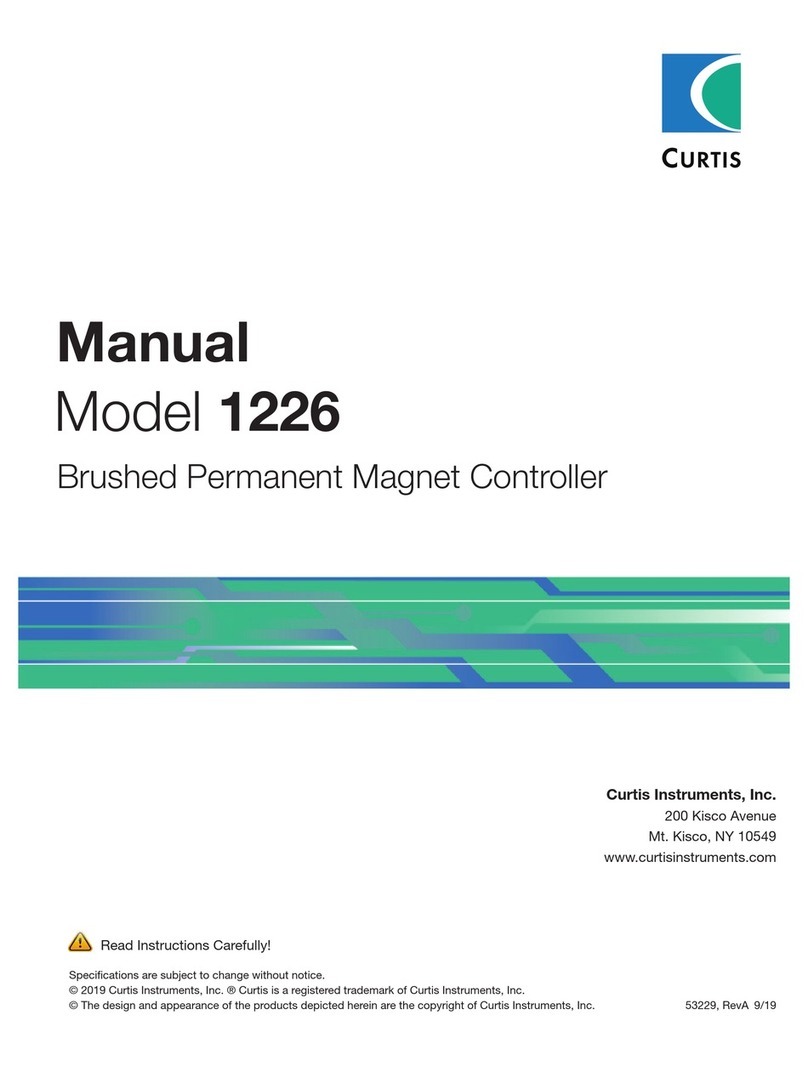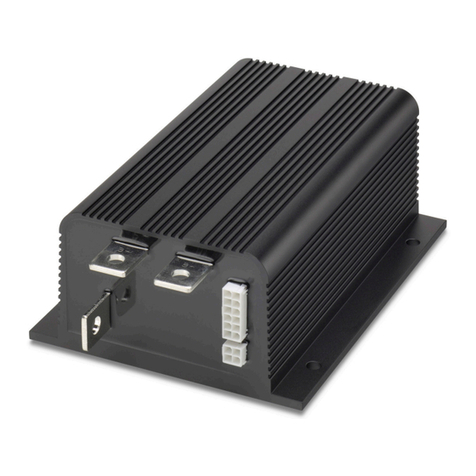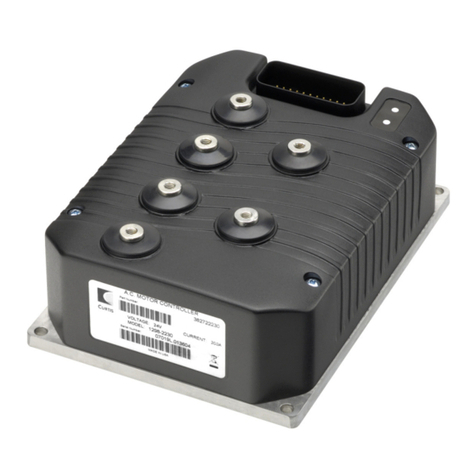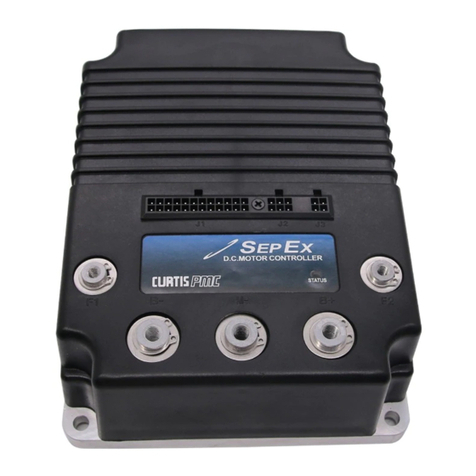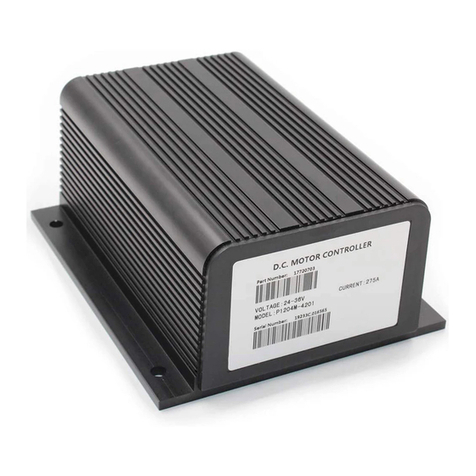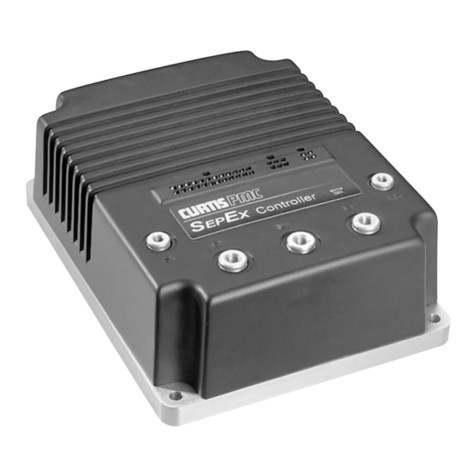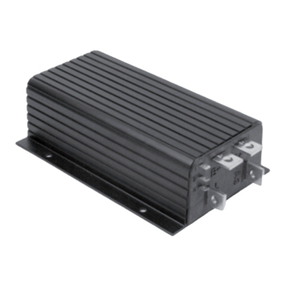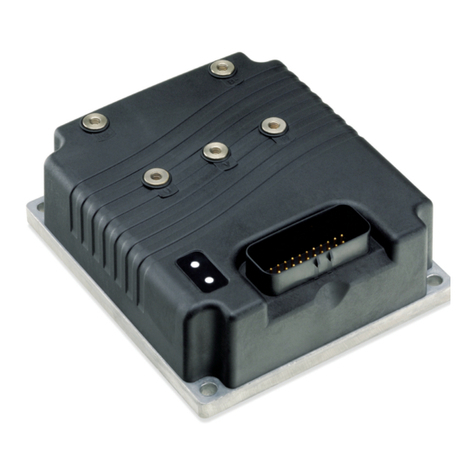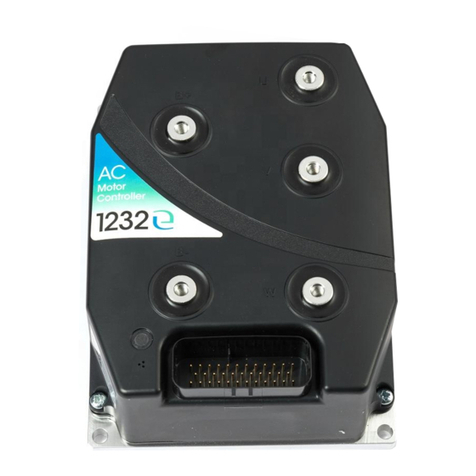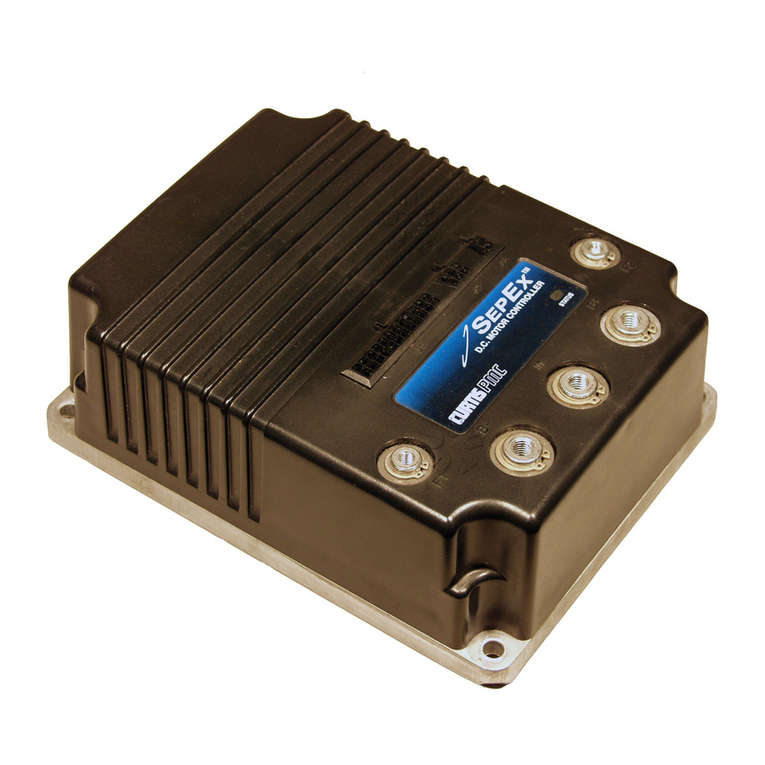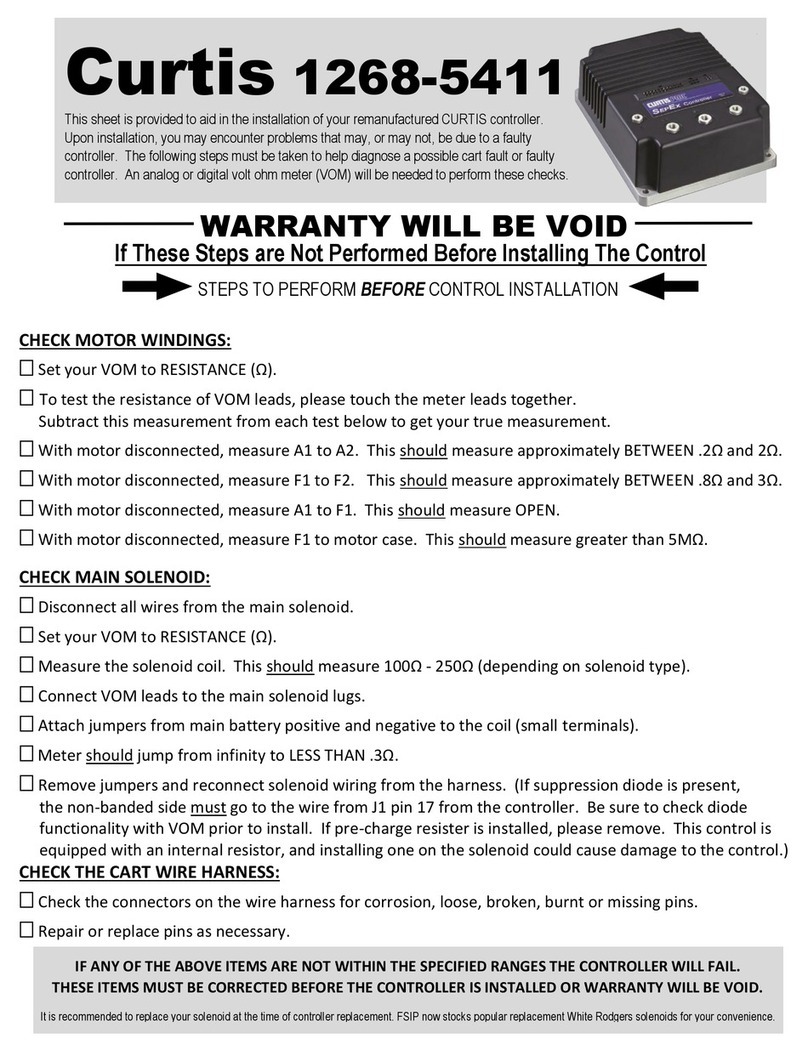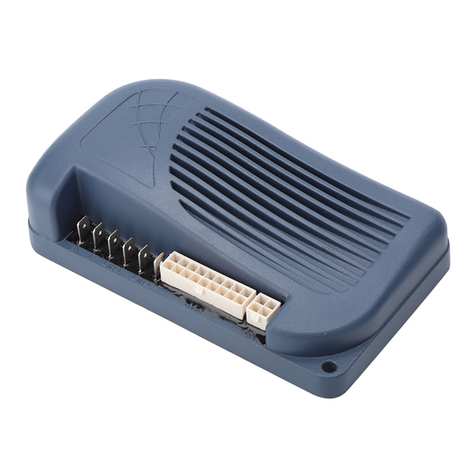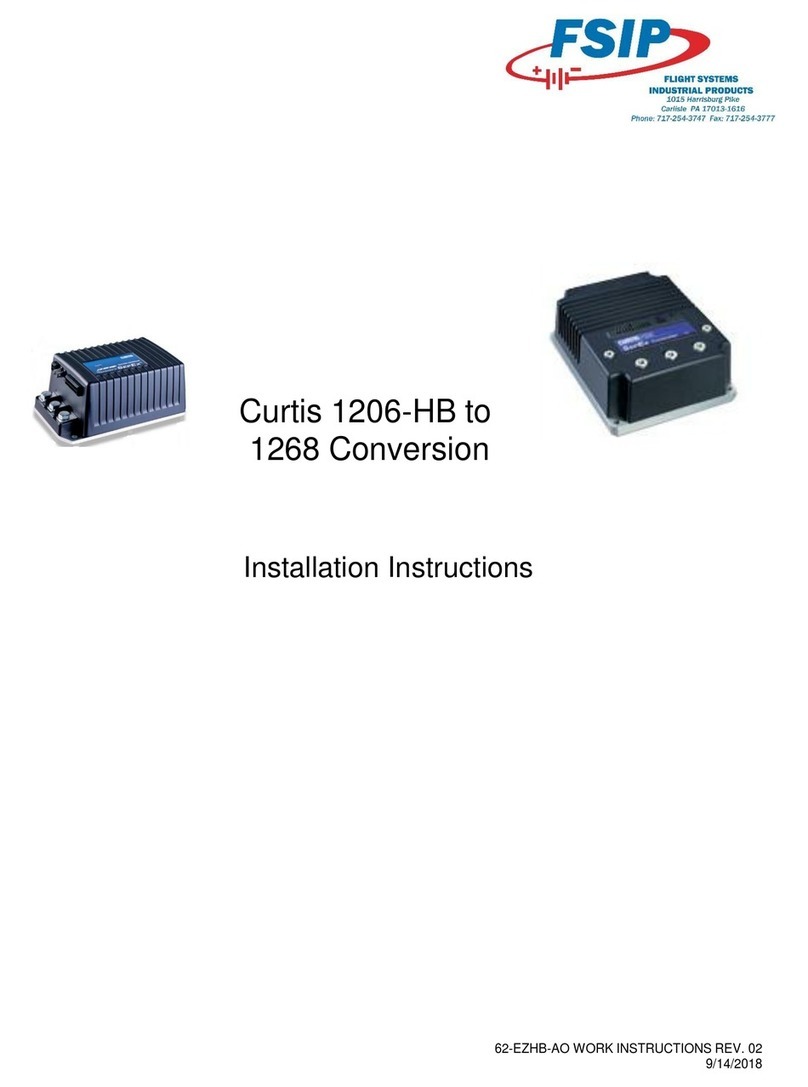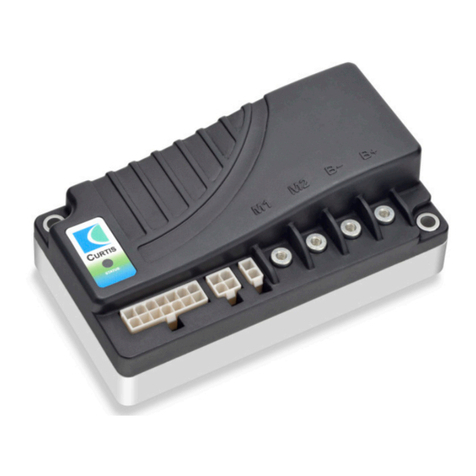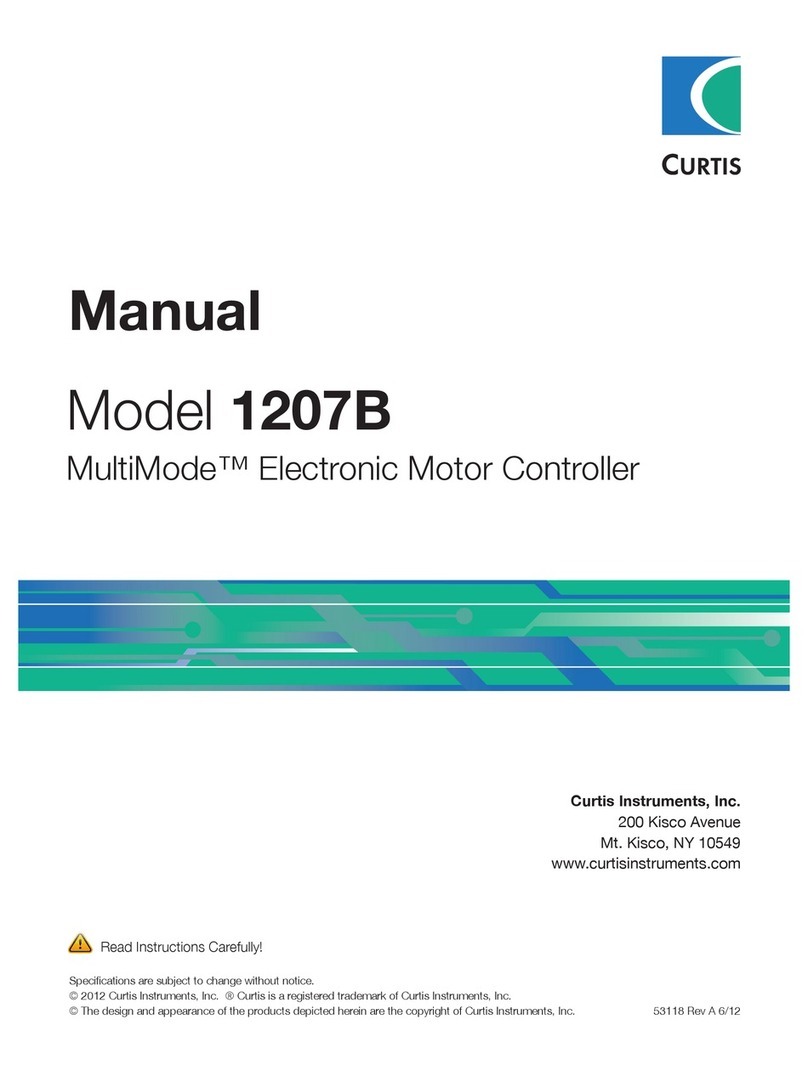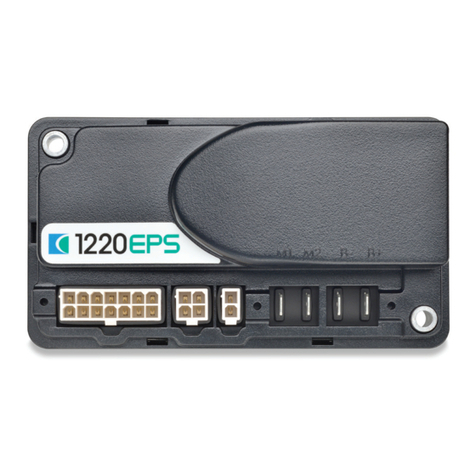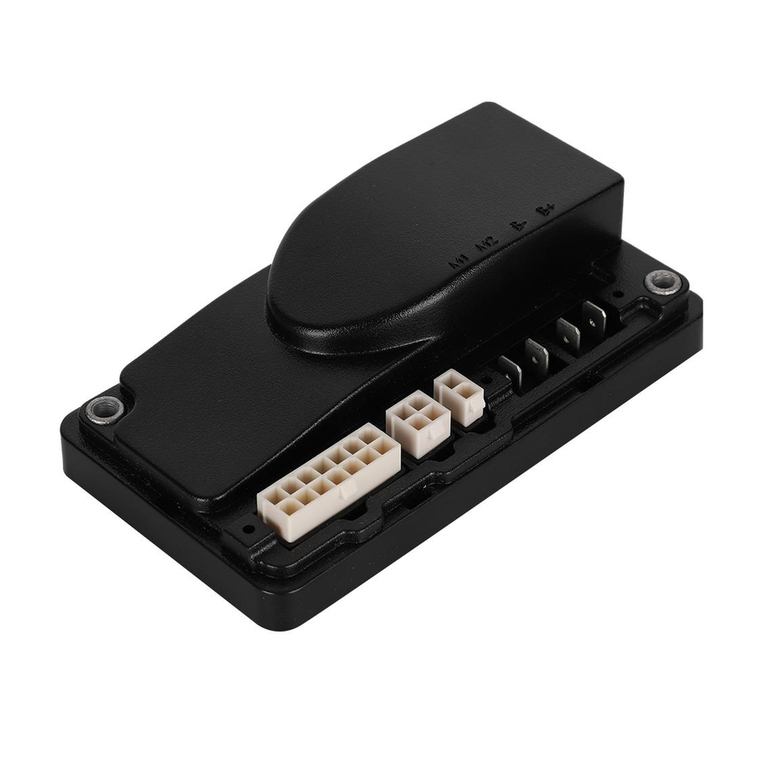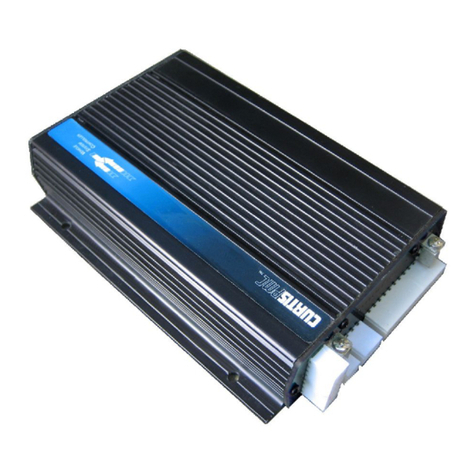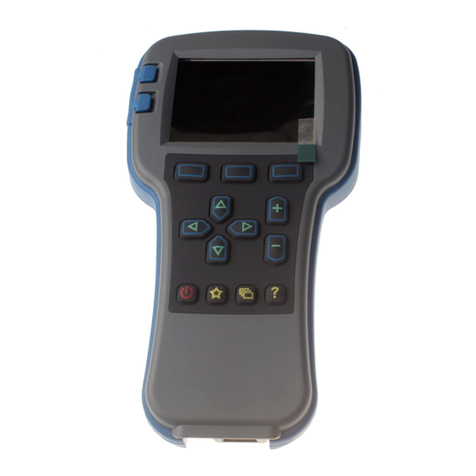
Curtis 1214-/15-/19-8 Manual 2
and linear rollback in overtemperature—thus preventing sudden power
loss regardless of thermal conditions
✓Intelligent handheld 13XX programmer provides a full set of parameter
and function settings
✓Diagnostic and test information for the controller—and other system
components—readily available through both an on-board LED and the
optional handheld programmer
✓Meets or exceeds EEC fault detect requirements, with circuitry and
software to detect faults in the throttle circuit, MOSFET drive circuits,
MOSFET output, contactor drivers, and contactors
✓Programmable input sequencing options include several combinations
of neutral start and static return to off (SRO)
✓Arcless contactor switching with microprocessor-controlled contactor
sequencing
✓Smooth, controlled plug braking—with either variable (throttle-
dependent) or fixed plug current limit
✓Neutral braking option provides automatic plug braking in neutral
✓MultiMode™input selects between two different operating modes,
thus allowing optimization of vehicle characteristics for different driving
conditions
✓Emergency reverse (belly button switch) provides full function
with a single input
✓Anti-rollback (ramp start) provides full power for starting on ramps
✓Simple contactor and switch wiring, with coil drivers monitored
for shorts and open circuits—thus ensuring fail-safe operation
✓Flexible throttle circuitry accommodates a variety of throttle types:
5kΩ–0, 0–5kΩ, 0–5V, 0–10V, inductive, Hall, etc.
✓Programmable “ramp shape”(static throttle map) provides flexibility
in selecting throttle response feel
✓Sealed package, providing environmental protection
✓Power connections made by tin-plated solid copper busses,
with a polarized Molex connector for control signals
Familiarity with your Curtis controller will help you install and operate it
properly. We encourage you to read this manual carefully. If you have questions,
please contact the Curtis office nearest you.
1 — OVERVIEW
